The Best Places to See Fossils in the United States
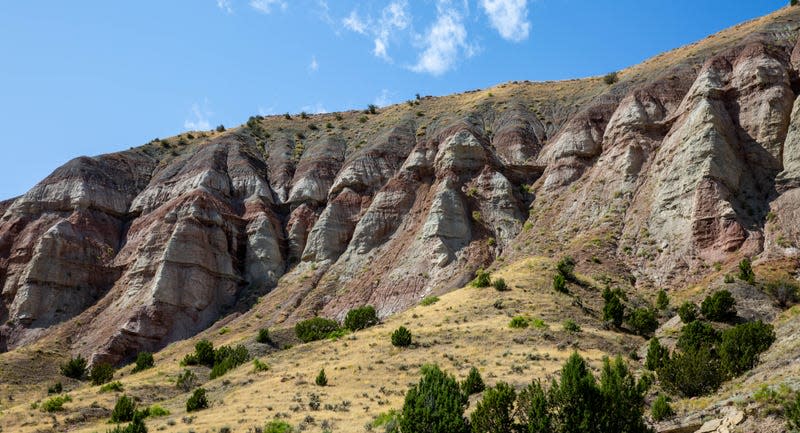
Into fossils? Taking a road trip across the country and looking for a side quest? Perhaps you’re just looking for an escape from modernity writ large. Well, these are the places for you. More than 320 dinosaur species have been named in the United States and most of the states have produced at least one dinosaur fossil, according to the National Parks Service. But there were also many other ancient denizens on the continent besides dinosaurs, the remains of which are well worth a visit. Without further ado, here are some amazing destinations for fossil spotting.
Grand Mea, Uncompahgre and Gunnison National Forests, Colorado
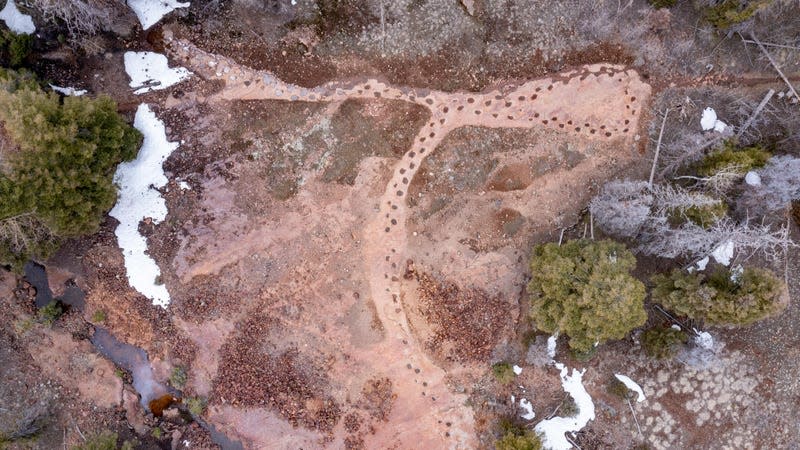
This site was just made accessible in April 2024, when the U.S. Forest Service acquired 27 acres in Ouray County, Colorado. Two of the acquired parcels contain a fossilized dinosaur trackway of 134 prints covering over 300 feet (91 meters), making it the largest continuous dinosaur trackway in the world, according to the Forest Service. The trackways were made by an individual sauropod over 150 million years ago, according to a USFS release. The trackway is known as the West Gold Hill Dinosaur Track site.
Dinosaur State Park, Connecticut
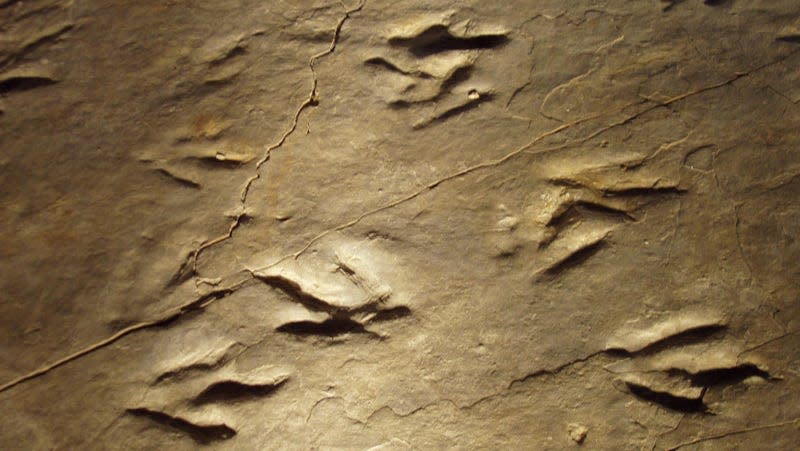
The northeast is not particularly renowned for its fossil beds—the majority of dinosaur fossils are out West. But Dinosaur State Park in the Connecticut Valley is an exception to that rule. Dinosaur State Park houses over 2,600 dinosaur footprints, the majority of which have been reburied to preserve them. But 1/3 of the tracks are exposed, for your viewing pleasure.
Badlands National Park, South Dakota
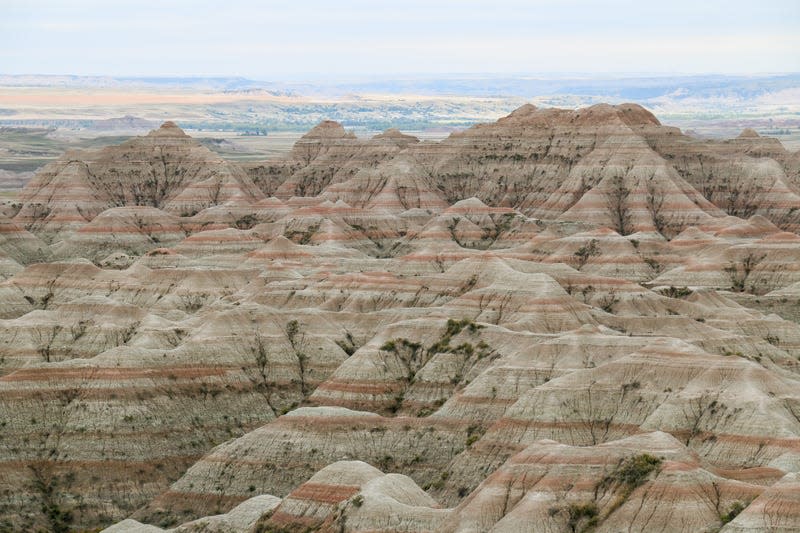
The Badlands have been a reservoir for paleontology for well over a century. Members of the Oglala Lakota had been finding fossilized remains well before paleontology was a formal discipline, according to the National Parks Service. The park has yielded thousands of fossil specimens from millions of years of Earth’s history. From the large mammalian brontotheres to the reptilian mosasaurs, which swam in the ancient seas that gave way to the Badlands, there’s plenty to explore.
Petrified Forest National Park, Arizona
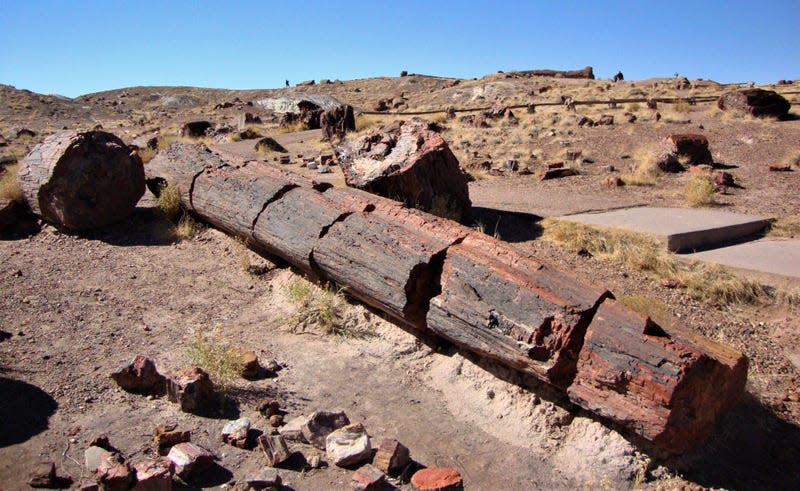
Known for its Triassic fossils, Petrified Forest National Park is well worth a stop if you’re in Arizona. The world as it existed over 200 million years ago has been frozen in time for your viewing pleasure, in the form of petrified trees and fossilized plants and animals—not to mention the living desert denizens that occupy the landscape today.
La Brea Tar Pits, California
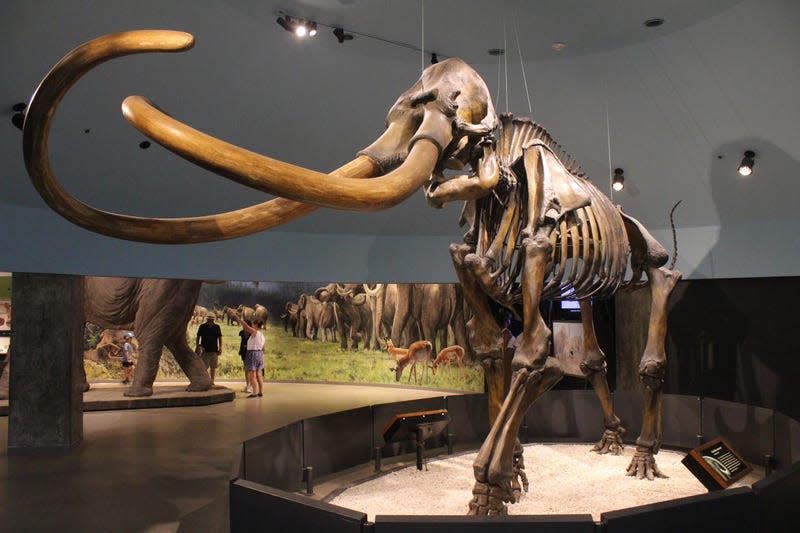
The site of Rancho La Brea now sits smack dab in the middle of Los Angeles, but it remains one of the most important fossil sites in the country. Over 100 digs at the site have yielded millions of Pleistocene fossils, from massive mammoths to the little legs of Ice Age woodpeckers. The asphalt deposits at the Tar Pits ensnared many animals over thousands of years, which now provide a terrific repository of ancient life for scientists hoping to learn more about ancient ecosystems, their climate, and their diverse occupants.
The Mammoth Site, South Dakota
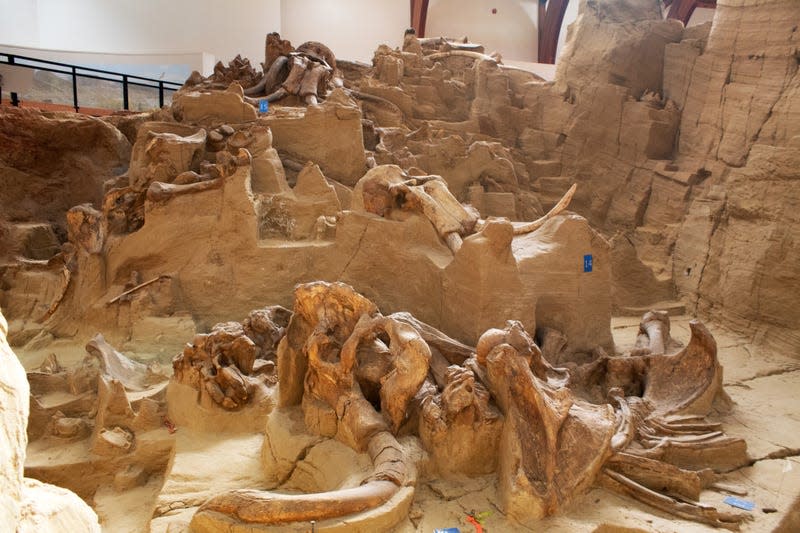
The Mammoth Site was born in the mid-1970s, after construction-related excavations reviewed a (not literal) handful of mammoth skeletons in Hot Springs, South Dakota. The mammoth bones—from 60 Columbian mammoths and three woolly mammoths, so far—are overwhelmingly male and appear to have died in what was an ancient sinkhole, according to Atlas Obscura.
Dinosaur National Monument, Colorado/Utah
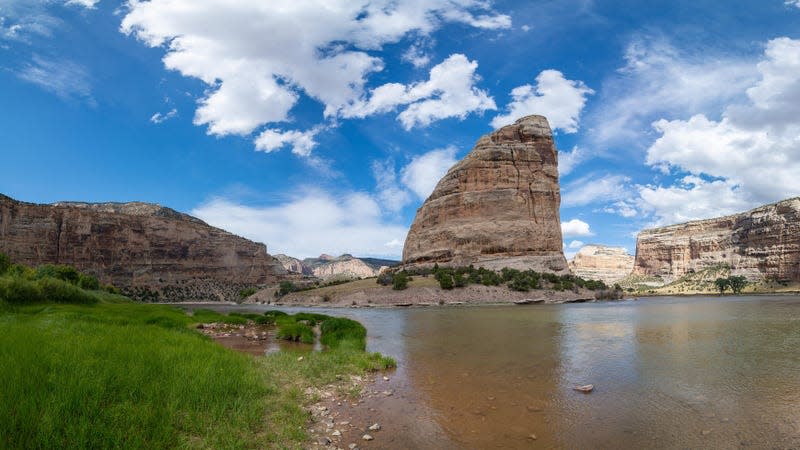
Dinosaur National Monument’s Quarry Exhibit Hall houses about 1,500 dinosaur bones of some of the most iconic dinosaur species. The remains of Allosaurus, Apatosaurus, Diplodocus, Stegosaurus, and more are included among the 150-million-year-old residents of the hall. Besides the dinosaurs at the monument, you can check out several petroglyph sites made by the Fremont people that once lived in the monument’s area.
Florissant Fossil Beds National Monument, Colorado
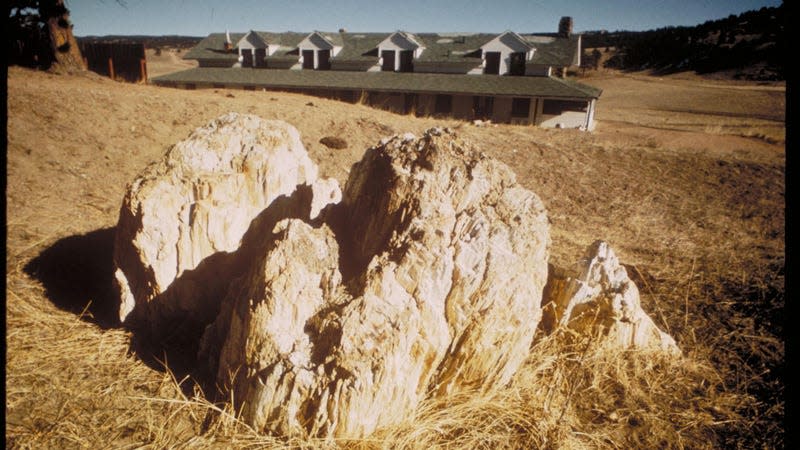
14-foot-wide stumps of petrified redwoods and thousands of insect and plant fossils await you in Florissant Fossil Beds National Monument. That’s right, the ancient world is more than just mammoths and dinosaurs. The little organisms matter, too, and you can check them out at the visitor center and on the fossil trails. In the summertime, you can check out the on-site yurt that serves as a fossil lab.
Cleveland-Lloyd Dinosaur Quarry
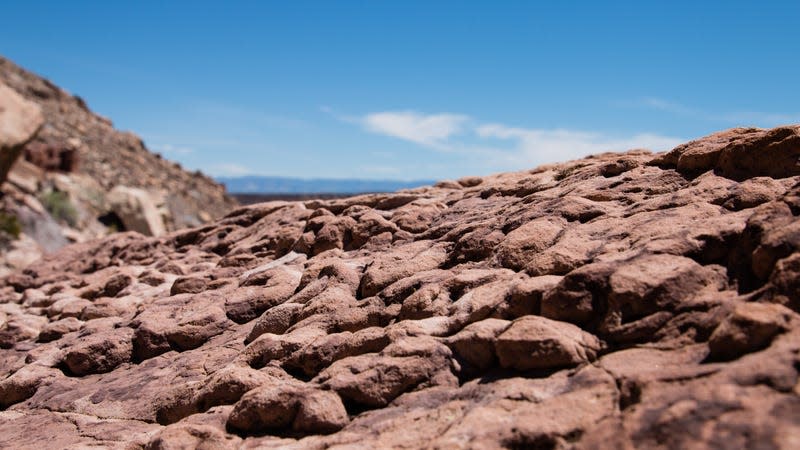
A quarry of over 12,000 bones from at least 70 different ancient animals, located 5,800 feet above sea level. What’s not to like? There are also fossilized clam beds (see above) for the shellfish enthusiasts among us. Though the quarry is currently closed for the season, it will reopen on March 31.
Dinosaur Valley State Park, Texas
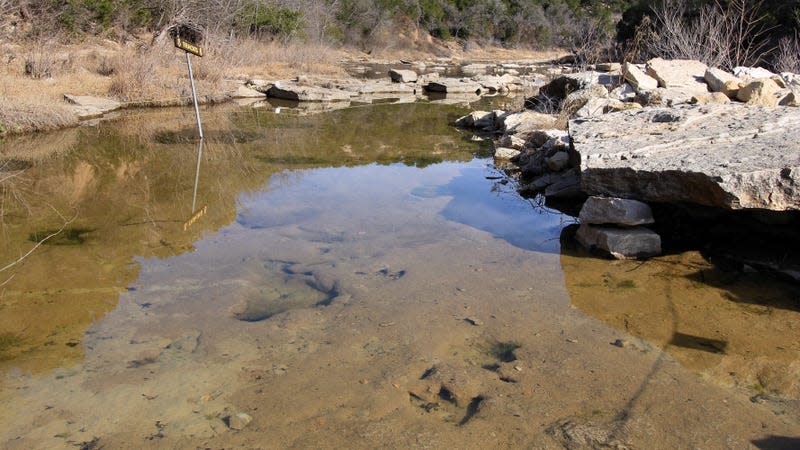
The area near Dallas and Fort Worth was once an ancient ocean. Dinosaurs walked along its beaches, and now, the Paluxy River plays host to their fossilized footprints. These trace fossils are sometimes submerged, but on dry days they are an awesome reminder of a more ancient Earth.
Fossil Butte National Monument, Wyoming
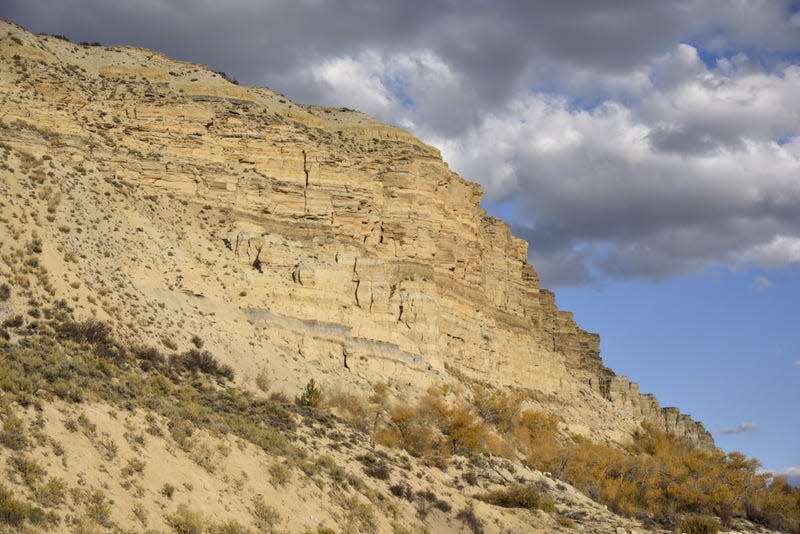
The “Aquarium in Stone,” as the National Parks Service has dubbed it, now lies high and dry in Wyoming. Rich with hiking trails and museum exhibits (featuring over 2,000 fossils from the monument’s Green River Formation), the fossilized aquarium of the ancient seas is well worth a trip.

